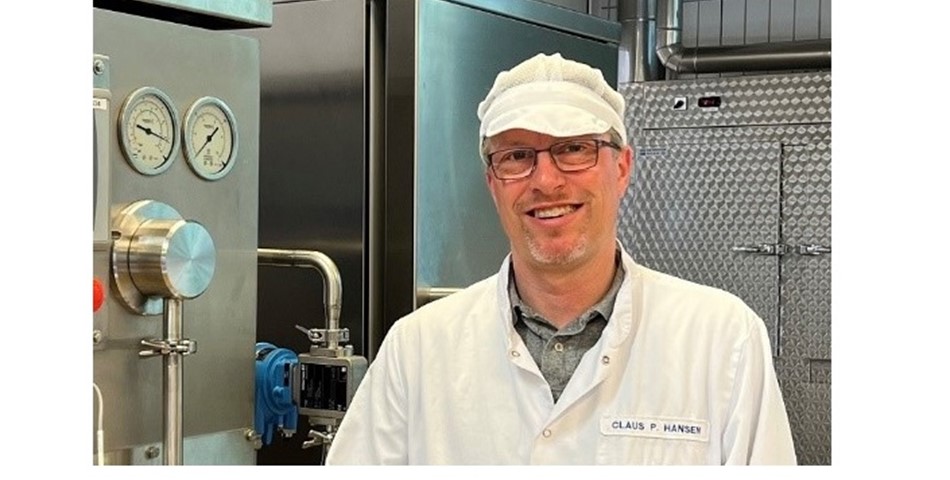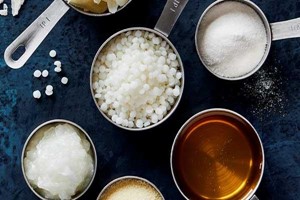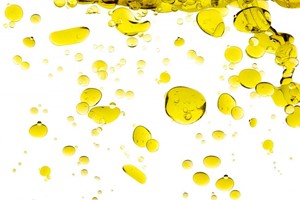Taste and texture remain crucial in encouraging shopper retention, and stabilizers and texturizers are important pieces to this puzzle. Addressing the challenges of price and supply fluctuations of key ingredients like locust bean gum, food innovators are rolling out a host of solutions bridging functionality with cost-effectiveness.
FoodIngredientsFirst speaks to CP Kelco, Hydrosol, Nexira, Palsgaard and ADM about the latest food innovations in stabilizing systems.
CP Kelco’s vegan liquid egg alternative
CP Kelco recently launched a vegan liquid egg alternative, pegged as a solution for product developers who are concerned about egg food safety and allergies, looking for a stable supply to combat egg shortages, or designing a vegan alternative.
“Our solution utilizes Kelcogel Gellan Gum and the formulator’s choice of plant protein. We have also been exploring new possibilities for Nutrava Citrus Fiber to help formulators combat inflation and supply imbalance,” shares Anne Sinha, director of strategic segments at CP Kelco.
“Nutrava Citrus Fiber is unique in that it is not an additive or traditional stabilizer. However, it can support a stable emulsion without the need for adding starch and/or a thickening agent such as xanthan gum. For egg-based sauces, we have been able to remove egg and reduce fat but keep emulsions stable with ideal viscosity.”
Citing one example of cross-collaboration, Sinha notes Chr. Hansen linked up with CP Kelco to come up with a complete solution for spoonable and drinkable ambient yogurt alternatives or “vegurts.”
“Chr. Hansen selected the right culture, and we formulated the nature-based stabilizer needed to complement a variety of nutritional profiles and plant protein bases, including coconut, oat, soy, pea and almond,” she details.
“By going through the steps that a customer might take and working through all of the technological challenges of taste, thickness and textures, we can help accelerate product development and provide an integrated team who are innovation experts at solving any challenges.
“Time to market is always a top concern for customers, so providing this kind of support can be invaluable,” she adds.
Hydrosol’s tailored stabilizer recipes
As with any ingredient category, stabilizer solutions are influenced by current developments in the world market. One example is locust bean gum, which has historically been subjected to price fluctuations.
“In the recent past, we have been dealing a lot with substitution of certain raw materials, as in some cases the availability on the market was very limited,” remarks Katarina Schäfer, product manager at Hydrosol.
“This automatically results in the necessity to replace the functions that the respective raw material brings with it in with other raw materials,” she notes. “A 1:1 exchange is usually not possible here. For example, the functions of a stabilizing galactomannan must be compensated by another galactomannan and another functional raw material, depending on the application.”
“As can be imagined, this means a high development effort when redesigning multiple systems, such as what we’ve done for products like cream cheese preparations,” she stresses
As a German producer of tailor-made stabilizing systems for dairy products, meat, ice cream and other products, Hydrosol is currently focusing on expanding beyond its core segments, such as stabilizing systems for vegetable fat cream.
“Each stabilizing system is developed for a specific application,” adds Schäfer. “In addition to the stabilizing system, we provide our customers with a detailed recipe with the relevant process parameters and technical support if needed.”
“If a system is created at the customer’s request, the technology that is available to the customer is, of course, taken into account when developing the recipe.”
Schäfer notes that ingredients, such as native starches, are avoided if the technology includes a process step that could limit its desired function. “In the case of native starch, for example, this would be the homogenization after the product has been heat treated. We can minimize possible sources of error from the outset when using stabilization systems.”
Palsgaard reduces and replaces locust bean gum
In other moves to combat the price fluctuations of locust bean gum, Palsgaard recently launched Palsgaard ExtruIce 306, a stabilizer system specifically developed to help ice cream producers.
The emulsifier is free from locust bean and tara gum, instead using a more price-stable option such as guar gum in combination with high-performing mono-diglycerides.
“The new blend is designed for applications including extruded and molded ice creams, soft ice and plant-based frozen desserts,” explains Claus Hansen, application manager and senior application scientist of dairy and ice cream at Palsgaard.
“As a clean label, palm-free and partially hydrogenated oils-free option, Palsgaard ExtruIce 306 is designed to deliver the same benefits as locust bean gum as far as possible. These include a creamy, rich eating experience, high overrun and heat shock protection.”
Hansen’s calculations reveal that in recipes with locust bean gum, emulsifiers or stabilizers can account for over 12% of the cost of the ice cream mix. “You can see the problem is that you have an ingredient that’s only contributing 0.5% of the recipe but 12% of the price.”
Using Palsgaard’s new solution, that figure can be taken below 5%. In terms of cost in use, the estimated reduction can range from half to two-thirds, Hansen notes. “That’s obviously really attractive. And it’s enough to allow the blend to be used at higher dosages to get even better levels of performance.”
Further developing this solution, Palsgaard is introducing an additional solution called Palsgaard ExtruIce 309, which still contains locust bean gum, but at a lower volume for those customers that are looking to cut costs without having to change the labeling on their current packaging.
“For future developments, we are going to use the strong functional mono-diglycerides from Palsgaard ExtruIce 306 and combine this with other hydrocolloids and vegetable fiber solutions,” shares Hansen.
By Benjamin Ferrer














